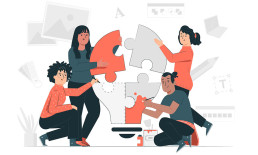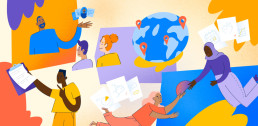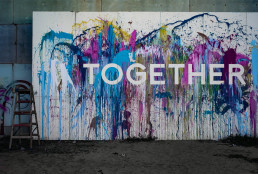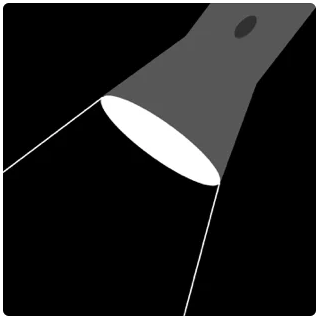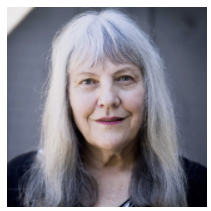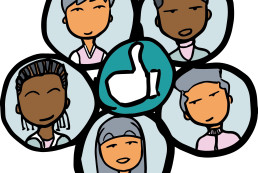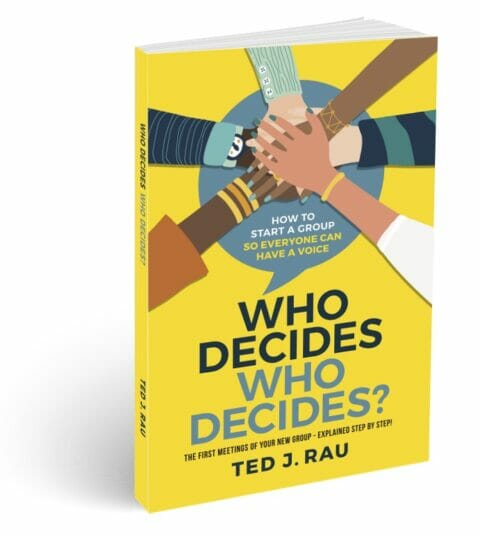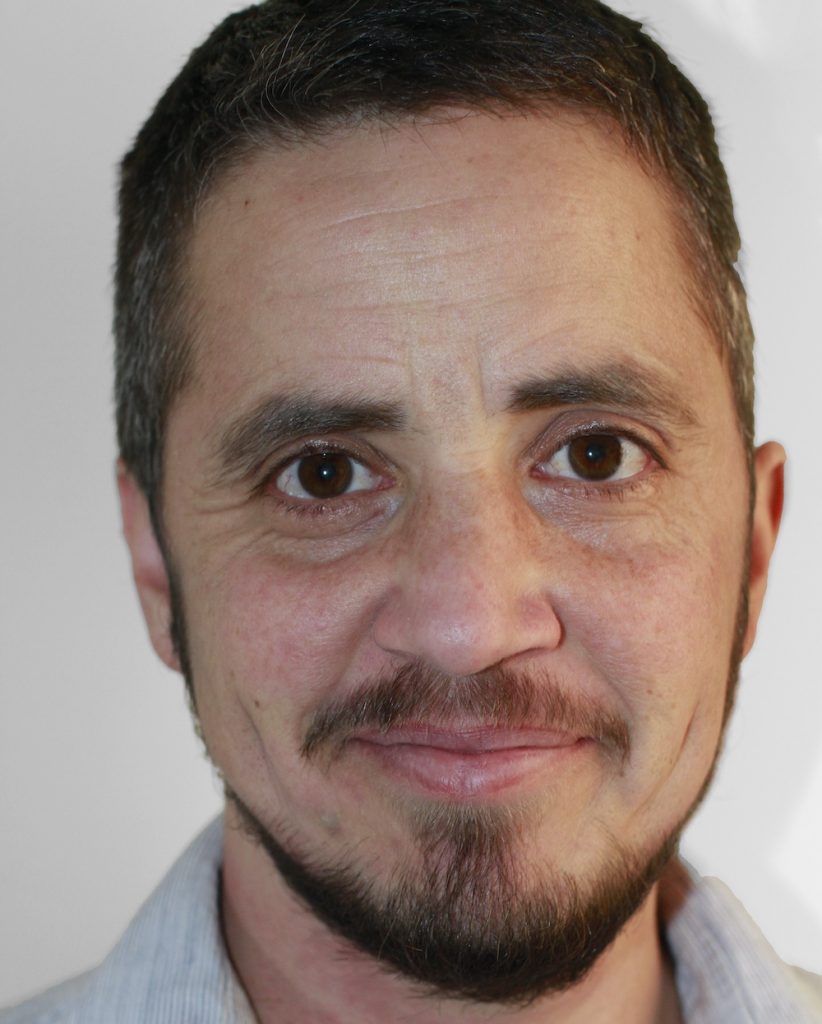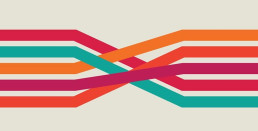EXPLORING THE COLLABORATION CYCLE
Below is an excerpt from the full article which can be downloaded here or at the bottom of this post. This article a part of the Tamarack Institutes Collaborative Governance and Leadership series.
The Collaborative Context

Many enter into collaboration thinking that the shared work is a linear and flat process from start to end. One of the favourite images describing collaboration that is often included in Tamarack power points is this image of plan versus reality. It captures the reality of collaboration including the twists and turns that collaborative efforts face as they move from start to completion. It can include obstructions like boulders and choppy waters and other challenges which are found obstructing the path along the way. This image always receives a small chuckle because individuals in the room have experienced these challenges.
However, the reality image still conveys a relatively linear, if upward, and challenging experience. This image is relevant for collaborative efforts seeking to achieve a result that is more defined such as the exchange of ideas, or development of a new program or service.
For more significant community change efforts, a different approach was introduced to Tamarack by Brenda Zimmerman of The Plexus Institute. Zimmerman described community change as a more cyclical process mirroring phases of development found in ecology.
The ecocycle concept is used in biology and depicted as an infinity loop. In this case, the S curve of the business school life cycle model is complemented by a reverse S curve. It is the reverse S curve, shown below with the dotted line, that represents the death and conception of living systems. In our depiction of the model, we call these stages creative destruction and renewal. The importance of the infinity loop is that it shows there is no beginning or end. The stages are all connected to each other. Hence renewal and destruction are part of an ongoing process.

Being an infinity cycle, there is no obvious start or end to the cycle. Let us begin our examination of the stages at the beginning of the traditional S curve. We will begin each phase by using the biological example of a forest and then look at the analogous phase in human organizations.(i)
The four phases of the ecocycle, as described by Zimmerman and the Plexus Institute follow the traditional (and linear) growth curve from birth to maturity. However, it also considers a renewal loop. The renewal loop includes a creative destruction phase and a renewal phase.

The image from the Plexus Institute website displays and describes the ecological cycle of a forest which starts with a variety of different plant growth (birth) which leads to increasing density as the forest grows to maturity. At maturity, the forest becomes increasingly vulnerable because of the density of growth. It can experience rot through invasive moths or pests or be ruined because of a forest fire. The creative destruction phase creates the space for renewal and regrowth. It is often the results of decay that enable the regrowth or renewal to seed.
Using the Ecocycle to Inform Our Practice
The ecocycle has been adapted by many organizations over the last several years to describe a better way of understanding community change and collaboration cycles. Tamarack has used the ecocycle to inform our practice of supporting communities tackling complex issues like ending poverty, building youth futures, deepening community, and navigating climate transitions. Tamarack, influenced in our early years by Brenda Zimmerman, recognizes that communities are dynamic and responsive. Even as collaborative tables begin to intervene in community change efforts, the community begins to respond, grow, and change. The ecocycle approach can be useful to collaborative tables to help understand and navigate dynamic change recognizing that change is not linear but rather exists in phases and cycles.
From Ecocycle to Collaboration Cycle
There have been many articles written about the Ecocycle and adaptations to this approach. One useful adaptation of the ecocycle was developed by Chris Thompson, Collaboration – A Handbook from the Fund for our Economic Future. (ii) In this handbook, Thompson adapts the ecocycle to a collaboration cycle approach. Thompson builds of the Plexus Institute ecocycle framework and Tamarack’s approach to adapting the ecocycle to community change efforts. Thompson uses the phases language of development, maturity, creative destruction, and exploration.
Thompson describes three elements which are vital to impactful collaboration: capacity, process, and leadership. The collaboration cycle is useful to focus on the process of collaboration.
This cycle serves as a roadmap for the diverse players who are along for the collaboration journey. It is invaluable to new participants joining an existing collaboration, as it can be used to help them understand where the partners are on the journey. Advocates of collaborations, particularly those performing the key collaboration functions, also should take the time to help each partner assess where they are on the cycle. Not every partner travels through the cycle at the same pace. (Thompson. Page 29) Thompson provides useful steps in each of the phases such as developing new thinking, analyzing data, and expanding possibilities in the exploration phase

In the development phase, the steps include choosing strategies, developing approaches, and adapting as the collaboration moves forward. The maturity phase includes implementation, evaluation and in some cases conserving to build on successful results. The creative destruction phase is initiated by declining outcomes, crisis, or breakdown and reconnecting.
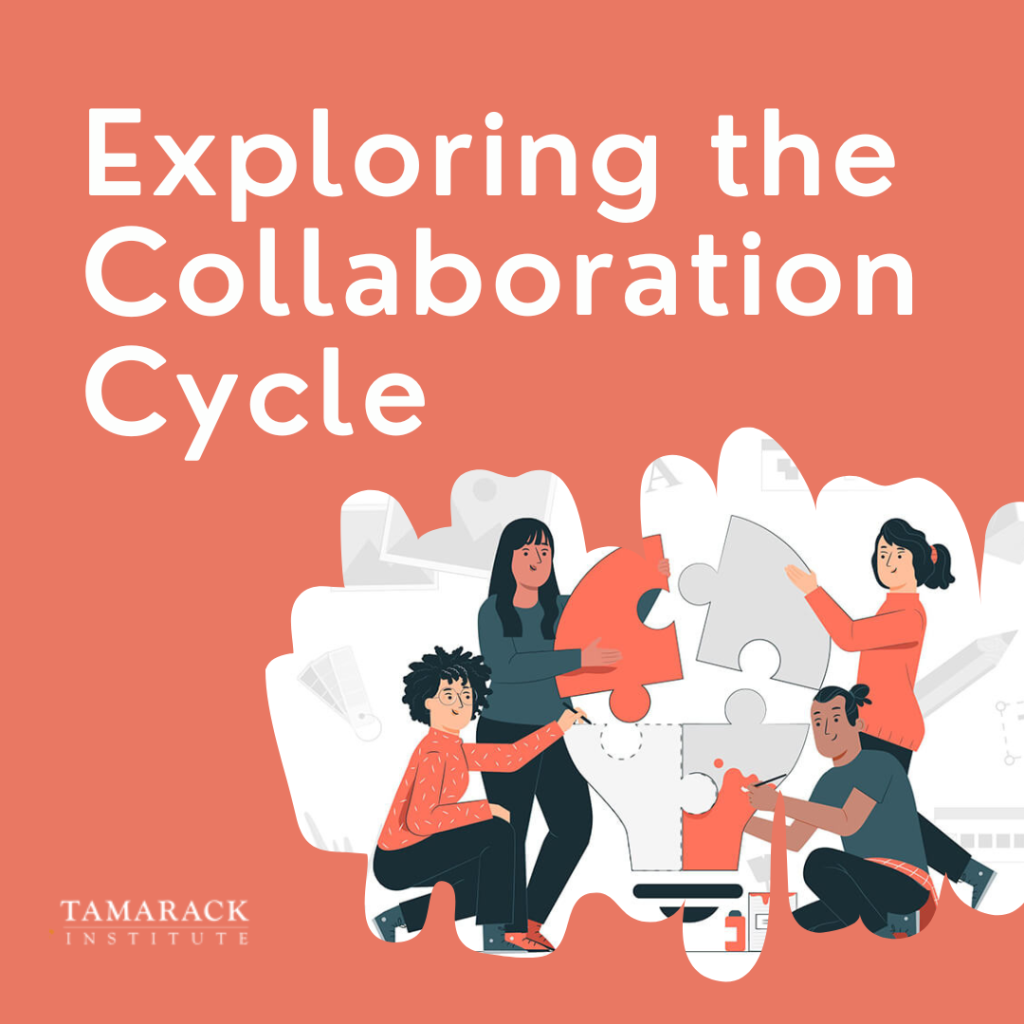
Access the full article HERE
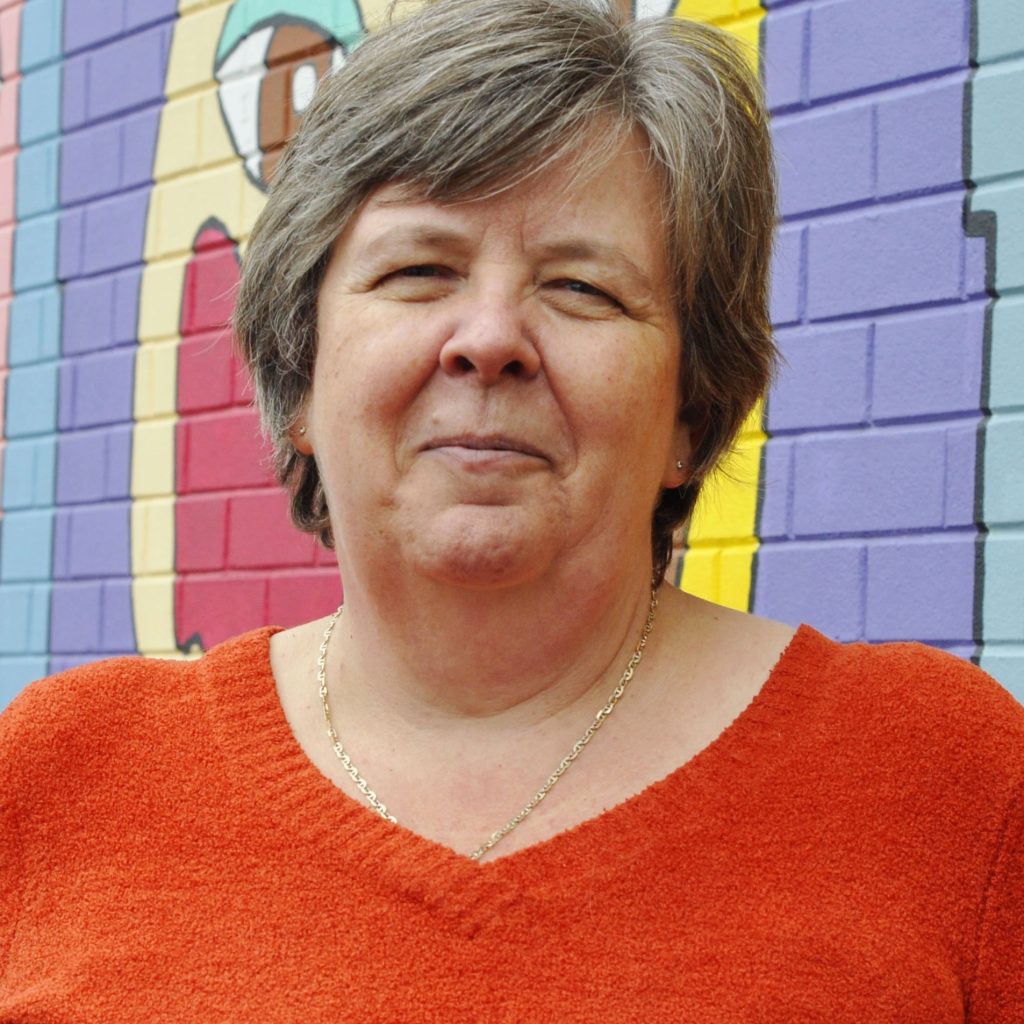
Liz Weaver is the Co-CEO of Tamarack Institute and leading the Tamarack Learning Centre. The Tamarack Learning Centre advances community change efforts by focusing on five strategic areas including collective impact, collaborative leadership, community engagement, community innovation and evaluating community impact. Liz is well-known for her thought leadership on collective impact and is the author of several popular and academic papers on the topic. She is a co-catalyst partner with the Collective Impact Forum.
Liz is passionate about the power and potential of communities getting to impact on complex issues. Prior to her current role at Tamarack, Liz led the Vibrant Communities Canada team assisting place-based collaborative tables to move their work from idea to impact.
featured image found here

Network Weaver is dedicated to offering free content to all – in support of equity, justice and transformation for all.
We appreciate your support!
Moving from ladders of engagement to self-organizing as decentralized leadership
Thanks to June Holley for thought partnership!
In campaign-based organizing, we tend to think of engaging people hierarchically: the goal is to move people up the ladder, progressively increasing their levels of engagement. Transplanting this to network organizing can give people a sense of “the network does all the things for network members,” where a few network facilitators become responsible for creating all engagement activities.
These practices shouldn’t be applied to networks. Why? Network members often experience shifts in capacity to engage in a way that is non-hierarchical. Because network participation often happens outside of the context of a job: we may devote less time to it – more sporadically and perhaps with varying levels of commitment. Network organizers should embrace these factors as part of how networks work, rather than trying to mash organizational thinking into network structures.
So, I’m starting to understand the idea of self-organizing as a decentralized, non-hierarchical version of engagement and leadership. We need to unlock this decentralization and move away from centralized levels of engagement. I say unlock because I think this involves a process of unlearning: doing things differently and practicing new ways of being with each other.
Attributes of a network that support self-organizing
- Widespread desire and openness to collaborate: it feels easy to meet people who are interested in talking, sharing learning, open to new ideas
- Self-authorization: you don’t feel like you have to ask for permission
- Accessible resources: including funds, spaces for discussion, knowledge databases, mentors or coaches, whatever else
- Liberatory culture: all network members actively practice undoing oppressions; working across privileges
- Spaces to learn in: you can see what others are doing, you feel like you can ask questions and get answers; you can see what others are learning
- Culture of seeing “failures” as rich learning opportunities: plus a shift away from an attitude of seeing these projects as a waste of time/resources
- Understanding: how individual’s efforts connect to network goals/values/principles
- Connecting the dots: ease of finding the right people to collaborate with and learn from
What prevents network members from self-organizing?
- Not feeling autonomy: having experienced generations of marginalization, disinvestment, and maybe never having seen someone like them in positions of power
- A narrow definition of leadership: privileging only a very specific type of person and way of interacting to be able to arrive to a position of power. This relationship to leadership trains us to do what we’re told rather than to initiate
- Resource dams and gatekeeping: only certain people have easy access to resources and/or resources are accessible but only after jumping through flaming hoops
- Lacking a sense of belonging to the network: why should I contribute? What’s in it for me?
- Culture: how we understand all of these things (autonomy, leadership, resources) is artificially narrow – we’ve become trained to understand them in certain ways and may have difficulty imagining that they could be different
How do we unlock decentralized engagement?
- Popular education: training and capacity building for and from within marginalized groups (these can be groups that are literally on the margins of a network, and/or groups of people that have been pushed to the margins of dominant society)
- Less gatekeeping of funds: innovation funds and shared gifting can be a way for funders and other gatekeepers to begin to practice letting go of control. Decolonial commons and cooperatives are closer to real, community control of resources. (Consider also: reparations!)
- Communities of practice: to unlearn some ways of being and practice new ones – creating new cultures of interacting: specifically anti-racist, feminist, decolonial, and otherwise undoing hierarchies. Pair that with being caring and holding space for change and cultural shifts.
- Protocols and practices: break down how to do things – the steps to take to form a project – as an activity that regularly happens in a network
- Naming power: measuring and creating intentional interventions around demographic shifts for who is/remains are in positions of power in a network will help xyz
- Logging Data: collecting, sharing, and visualizing data that gives us a real-time picture of where we are in this shift
Finding best fit: using network weaving to help people find the “right” person/people to start a project with
About Ari Sahagún

I grew up in the tallgrass prairies of Illinois, where the lanky sandhill cranes pause on their way to and from Mexico. Retracing one of my family’s roots, I’ve recently moved south to Mexico City to do what I do as a mixed heritage person: build bridges. One facet of my work is building bridges between extractive capitalism/colonialism and a society that repairs and regenerates from these traumas. I’ve run praxis groups on decolonization and helped investors move hundreds of thousands of dollars to Black- and indigenous-led projects in the US and internationally. The other part of my work is building bridges that support movement networks on the path toward a more just society. Right now, this looks like facilitating peer learning among climate justice organizations in the United States, mapping interconnections that support power-building in California, and co-designing a complex, emerging network to support health equity. My specialties are at the intersections of justice, co-design, network strategy, social network analysis, technology, and communication cultures.
featured image found HERE

Network Weaver is dedicated to offering free content to all – in support of equity, justice and transformation for all.
We appreciate your support!
Liberatory Governance... and belonging
How do we organize ourselves... in a world where everyone belongs?
Of the many barriers to living into a world where everyone belongs, this question feels fundamental: how do we organize ourselves? What might it look and feel like to work in an organization without coercion, without domination hierarchies… where everyone belongs?
So today I want to talk about governance. The term sounds bland, but I think it’s sexy: it is the magic that makes everything else possible, and the curse that can undermine even our best work if we don’t pay attention to it. I like this simple definition from the WeGovern community:
Governance is how we choose to be together.
Zen priest and movement strategist Norma Wong names what we all feel, looking out at the world, our institutions, and our movements:
Governance as it exists right now is in collapse.
While I think about governance at every level (family, organization, nation-state), today I want to focus on the scale of an organization, network, or collective: a group of people with a shared purpose and defined membership.
No transformation without governance
I want to thank Brandon Dubé in particular for pushing me, and Building Belonging, to embrace governance as a tool of transformation, and to explore sociocracy in particular. He helped remind us: if governance is about how we choose to be together, then by definition we are all involved in governance all the time, every day, in all of our relationships. Kali Akuno, one of the founders of Cooperation Jackson, agrees:
Governance is just how we make collective decisions together.
In a previous post reflecting on the nature of power, I adopted Priya Parker’s simple definition: “Power is decision-making.” Following this logic, governance is about making visible how power operates, and treating the question of how we wield power with intentionality.
I love Ted Rau’s delightfully provocative question and book: “Who decides… who decides?” If you really sit with it, it’s a radical question, and one that helps distinguish acts of leadership (someone has to speak first, to take responsibility for initiating or facilitating a conversation and the act of collaboration) from acts of domination (preventing others from speaking, my way or the highway, etc.).
Here’s the thing: I’ve come to believe that there is no durable path to transformation without attending to both the process and structure for how we make decisions together in a collective context. As Sean Andrew, Louise Armstrong and Anna Birney explain:
How we relate, work together, and organize are cornerstones of change making… Governance is central to any form of organizing or organization creating change.
We’ve been socialized to view governance as something annoying that gets in the way of “doing the work.” I want to flip this conventional understanding to expose a deeper truth: practicing good governance is the work; without it, anything we create will ultimately be fragile or even antithetical to our aims. As john powell reminds us:
If we don’t do things at a structural level, the structural level will undermine the progress we are making at the personal level.
What we agree on
To generalize broadly we can divide governance into two aspects: structure (think org charts, roles and decision-making authority, etc.) and process (how we make decisions, how we relate to each other). While the two are of course inseparable, today I want to focus primarily on structure: how do we embed the principles of liberatory governance in our org design?
Specifically, I want to distill three foundational principles that practitioners seem to agree on. Of course this is just my subjective perspective; I very much welcome generative pushback and other efforts to synthesize a broad and diverse field.
1. The opposite of coercion is consent
In a world where everyone belongs, we don’t want coercion. As Zakiyya Ismail notes:
Wherever there is coercion, there is oppression.
Dominant culture organizational hierarchies enshrine coercion: “bosses'“ are elevated above other workers; disobey your boss and you risk getting fired. In his beautiful handbook on Mutual Aid principles, Dean Spade notes:
Our society runs on coercion… Most of us have little experience in groups where everyone gets to make decisions together, because our schools, homes, workplaces, congregations, and other groups are mostly run as [domination] hierarchies.
Because we lack practice, too often when we seek refuge from this authoritarian model we make the mistake of swinging to the opposite extremes: either rejecting structure altogether (all hierarchy is bad! inevitably leading to the infamous “tyranny of structurelessness”) or demanding an overly rigid homogeneity that calls for universal consensus. As experiments like Occupy Wall Street have shown, relying only on consensus (everyone agrees on the way forward) is both inefficient and can allow bad-faith actors to impede progress… itself a form of coercion.
The antidote is consent-based governance. As Stas Schmiedt notes:
Consent is how we operationalize liberation.
There are a range of methodologies emerging that seek to codify what a consent-based governance structure/practice might look like; my favorite thus far is sociocracy, a concept given life by the team at Sociocracy for All. This article by Ted Rau is a great introduction, and here is a helpful companion piece distinguishing consensus-based governance from consent-based governance. To be clear: majoritarian democracy (what we purport to practice in the United States) is NOT based on consent. Majority rule doesn’t seek to integrate minority objections; it seeks to overrule them: in my view, that is a coercive system.
The core idea is that the bar for action is not agreement but willingness (a term I prefer to “tolerance”). People can (and must!) object to a proposal that they believe will undermine organizational purpose, but that objection is not a veto: it’s naming an issue that must be addressed and integrated into an improved proposal before it can move forward. The assumption is that the proposal will move forward once the objection has been integrated.
It’s a subtle but radical shift that provides the basis for everything that follows. As the folks at Circle Forward note:
Consent is the foundation for an entire governance system.
2. Structure codifies, reflects, and creates culture
OK, we’re organizing around consent: this is already a radical departure from dominant cultures (and organizational structures) predicated on coercion. But precisely because we have so little practice/training in operationalizing consent, we need help. Our structures have to support us, individually and collectively, in practicing different ways of being. In his comprehensive study about how change happens, sociologist Damon Centola concludes:
We don't make decisions as individuals; we are reciprocally influenced by the environment and people around us… It is largely the structures in which they are embedded that determines whether things work well or not.
On this all the practitioners I follow agree: the structure both reflects and creates culture; it serves to codify how we relate to each other. Tracy Kunkler explains:
Governance is how we set up systems to live our values, and leads to the creation, reinforcement, or reproduction of social norms and institutions. Governance systems give form to the culture’s power relationships.
The folks at Brave New Work name the implication for our org structures:
Whatever we want to be true about the way we relate, is it in the system, is it in the structure?
Taking this question seriously underscores the importance of governance. If we acknowledge that our default patterning is shaped by systems of oppression (white supremacy, patriarchy, capitalism, etc.), then without intentional effort—and lots of practice!—we are likely to repeat those patterns in our organizations. bell hooks names the challenge:
To build community requires vigilant awareness of the work we must continually do to undermine all the socialization that leads us to behave in ways that perpetuate domination.
Without a structure that supports us in practicing these more liberatory ways of being, we will find ourselves struggling. I love this vulnerable share from Dana Kawaoka-Chen documenting her own efforts at culture-change inside her organization:
Even if I as the executive director had a vision for another way of being, I did not have the organizational structure in place to reinforce a different set of values, which allowed the default operating system to prevail.
3. We want a decentralized structure that enables people to share their fullest gifts
Here we begin to wade into murky waters. I think practitioners generally agree on three things:
- Liberatory governance systems must be decentralized: there is no central command and control structure.
- The structure must seek to, as Alanna Irving notes, “align power with responsibility.” And I would go one step farther: to align responsibility with authority: whoever is best-positioned to act (as a function of the healthy expression of power, whether derived from knowledge, capacity, or relationships) has the responsibility and authority to act.
- The structure must help maximize and channel “discretionary energy” in service of our shared purpose. (Indeed, this has long been one of my core definitions of leadership: the ability to inspire and support others in tapping into the fullest expression of their gifts… and sharing those gifts in support of the collective).
Emergent paradigms seek to solve for these concerns; frameworks like sociocracy do a good job of speaking to the first two points here. While in theory sociocracy can also provide a structure to unlock and channel people’s gifts, I have yet to see it work like that in practice… for reasons I’ll get into below.
Where we still struggle
There is so much that is difficult about this… even as the promise remains tantalizing and delightful when we taste it. As Ericka Stallings notes,
This lack of knowledge about how to operationalize liberatory values exists because we’ve never actually experienced it, so we are almost imagining it into being.
I want to name here three of the core challenges I see that we haven’t yet collectively found a way to effectively navigate. These are areas of experimentation and practice in real time among all the organizations, networks, communities, and collectives that I see on the cutting edge of this work (groups like Wildseed Society, Change Elemental, Resonance Network, the Fierce Vulnerability Network, the Post-Growth Institute, the Thrive Network, and Open Collective, among others).
1. Leadership, agency, power, and self-governance (structure alone will not set us free)
There are books written on each of these topics, but the dynamic I want to highlight here turns on the question of agency (defined as the capacity to exert power).
The general pattern I observe splits along lines of privilege and marginalization. Those socialized into power and privilege, once they become aware of that socialization and not wanting inadvertently to perpetuate domination, shrink from exercising their power: they abdicate their agency (white people in multiracial space, e.g.) At the same time, people marginalized and oppressed by dominant culture have a hard time feeling safe enough to exercise their rightful power. Everyone is afraid to take on the responsibility that comes with leadership, especially amid the radical complexity of proposing a course through uncharted waters… and make decisions that will inevitably have an impact on other people.
The result can be a leadership vacuum, where no one is taking the action that all can see is needed. Gopal Dayaneni names this as one the biggest obstacles we face on the path to liberation:
The primary barrier is our ability to democratically self-govern… The practice of self-governance is the hardest thing. We have to make the hardest decisions, and we don’t have any practice.
Instead, we often look to the structure, or to others with more visible forms of social, positional, or structural power, to get us unstuck. But this misses the point. Quanita Roberson offers this provocation:
So much of what we are struggling with as a culture is that we want everything to be external so that we don't have to take responsibility for what is actually ours to do.
Norma Wong puts it simply: “Transformation requires agency.”
Self-organizing is dead: long live self-organizing!
So here’s the paradox. On the one hand, I agree with Gopal Dayaneni, who declares:
The future must be self-organized.
And I agree with Alanna Irving, who asserts:
I believe there is no such thing as “self-organizing”—there is always work to be done and a skillset required to coordinate people to move together toward a larger shared goal.
The challenge I’m naming here has to do with coming into right relationship with power: our own, others’, and power as made visible and reflected in organizational structure. For self-organizing to work, individuals have to assert agency: to take responsibility for making decisions with and on behalf of the collective. This is by definition an act of leadership. Nwamaka Agbo frames the challenge:
We don’t what it means to lead, until we have to make difficult decisions and take accountability and responsibility for those decisions… collective decision-making still requires that we make decisions.
2. We don’t know what to do with money
If power, agency, and self-governance is hard… that difficulty increases by a degree of magnitude when we introduce money. Two things were clear to me in launching Building Belonging: I wanted to avoid the funder-appeasement / movement-capture trap of the nonprofit industrial complex; and I wanted to avoid the opposite extreme of relying entirely on a volunteer-based community without any money. Both situations risk reinforcing the very power dynamics I want to escape: the gatekeeper model of elite access to funding, or volunteer networks that end up becoming becoming playgrounds for the privileged.
And there’s more: I had a sense that money is one of the most transformative realms of practice available to us; as Orland Bishop reminds us, it is humanity’s largest unconscious agreement.
I love this entire interview with Gopal Dayaneni, where he explains:
The primary reason people pay their rent is because they have no alternative ways to meet their housing needs… It’s not primarily the coercive power of the state or corporations. Rather, we are forced to comply without consent because we have no meaningful alternative.
So even as we focus on developing more liberatory ways of working with money (gotta pay rent!), that’s only half the work: we also have to be devoting energy to meeting our individual and collective needs outside of that system. If we are to transition to a post-capitalist world where everyone belongs, here’s what feels clear to me.
- We have to find ways to meet our needs outside of the money/exchange paradigm (see e.g. this recent post from Mike Strode, exploring some creative ways of flowing value and meeting needs outside the bounded system of money)
- We have to use money to meet our needs in the interim while we remain tethered to that paradigm (see e.g. this discussion of challenges and experiments from Francesca Pick)
- We have to be proactively engaged in both levels at the same time (I love this example from the DisCO cooperative: finding ways to honor the value not only of traditionally remunerative work but also of care work and pro bono contributions)
I’d love to see more examples like DisCO intentionally exploring this space, anchored in indigenous and intersectional feminist principles.
3. Navigating conflict and impact
On this point Kazu Haga is blunt:
The greatest barrier to living and building beloved community is how we navigate conflict.
He may be right: everything else is navigable if we have the skills to transform conflict; not much is possible if we don’t. This has been my consistent lesson from all my work understanding and trying to transform oppressive systems: they depend on separation. Oppressive systems cannot sustain themselves if we have the ability to repair ruptures and reconnect what has been severed. Indeed, I love this definition of leadership from Marcella Bremer, channeling Otto Scharmer:
Leadership is connecting what was separated.
How can we embed accountability and conflict transformation in our structures, when these are fundamentally relational capacities? As Sean, Louise, and Anna remind us:
The nature and quality of our relationships is the foundation of any governance.
I don’t have great answers here. It feels clear to me that a big piece of the work is re-wiring how we understand and relate to conflict: from something bad to be avoided, to Malidoma Somé’s beautiful definition:
Conflict is the spirit of the relationship asking itself to deepen.
My own evolving sense is at minimum every organization/network/collective needs two things:
- The structural equivalent of a help line: where do you go when you find yourself in conflict and unsure how to proceed? I love Alyson Ewald’s idea (from this podcast) of creating a “conflict celebration team.”
- A community-wide commitment to building capacity to navigate conflict, individually, interpersonally, and collectively. This includes trainings and practice, drawing on a growing range of methodologies (I like the framework offered by Deep Democracy, and the skillsets named in Nonviolent Communication, e.g.)
And of course, to name the elephant in the room here: upstream of everything we’re working on is trauma. If we want to come into right relationship with power and agency, hold the tension of navigating money as we transition toward post-capitalism, and transform conflict… we need to find ways individually and collectively to heal from trauma.
Structure is not a panacea. We are still human beings inside of whatever structure we create, with all of our foibles, unhealed trauma, and limited capacity. I’ve written elsewhere about trauma, but need to name it here.
An invitation to practice
If you made it this far, I want to close with an invitation to action, and to feedback: what resonates? What doesn’t? What are you seeing? This work is incredibly difficult… and incredibly liberating, when we find ourselves in structures of belonging.
The WeGovern Community reminds us:
Governance begins with each of us: in practice, in relationship, every day.
I like the way Kim Tallbear expresses our humble aspiration:
We are not trying to get it right, we are trying to get it less wrong, through practice.

Brian Stout is a systems convener, network weaver, and initiator of the Building Belonging collaborative. His background is in international conflict mediation, serving as a diplomat with the U.S. Agency for International Development (USAID) in Washington and overseas. He also worked in philanthropy with the Bill & Melinda Gates Foundation, before leaving in early 2016 to organize in response to the global rise of authoritarianism and far-right nationalism. He recently returned to his hometown in rural southern Oregon, where he lives with his wife and two children.
originally published at building belonging

Network Weaver is dedicated to offering free content to all – in support of equity, justice and transformation for all.
We appreciate your support!
donate in the box above or click here
Reclaiming Care Beyond Roe v. Wade
When the state cannot guarantee our safety, we turn to community as our ancestors did
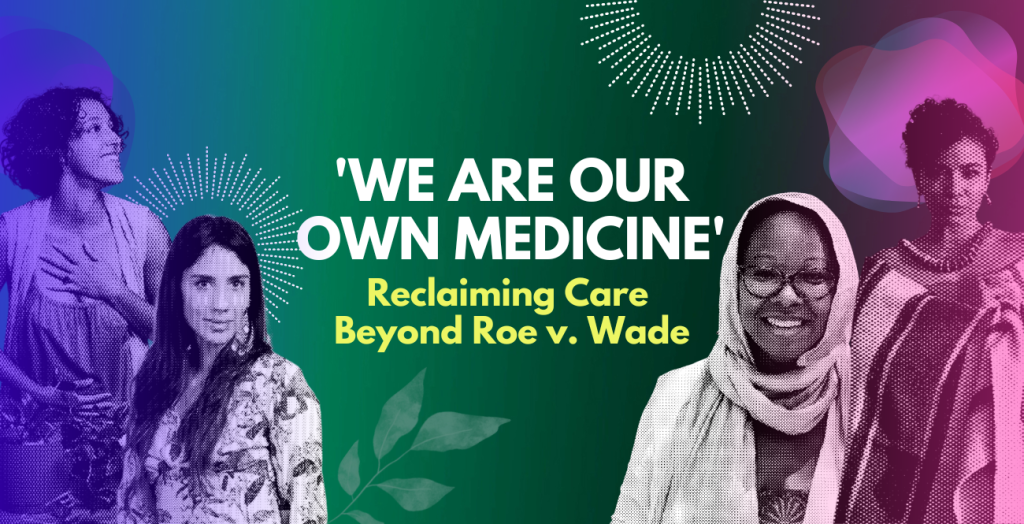
On June 24, Roe v. Wade was overturned by the Supreme Court after nearly 50 years as precedent.
Weeks before, in response to the leaked decision, Resonance Network hosted ‘We Are Our Own Medicine,’ a gathering grounded in community, storytelling, and ancestral wisdom. Alongside Black and Indigenous healers of various traditions, we came together knowing what our ancestors have known for generations: the state cannot guarantee our safety — it never has.
In the US, incarcerated, disabled, undocumented, poor, queer and trans folks, and survivors have been denied reproductive rights, bodily autonomy, and care for decades. Because this violence lives in our history — and shared reality — we gathered to learn from and share stories from ancestors — past and present — who’ve lived this experience.
In short, when the state cannot guarantee our safety, we turn to community as our ancestors did.
Below is a constellation of wisdom from ‘We Are Our Own Medicine.’
* * *
Deoné Newell — Women’s Empowerment Coach
Deoné is a Navajo/Black entrepreneur, Breathwork Facilitator and Women’s Life Coach. As a woman who hails from the Navajo Reservation (Window Rock, AZ), and has seen the effects of systemic oppression and generational trauma firsthand, Deoné has dedicated herself to making ancestral healing, and its forgotten wisdom accessible to as many BIPOC women as possible.
Karen Culpepper—Clinical Herbalist/Educator
Karen has been a practitioner and bodyworker for over 14 years, focusing her work on intergenerational trauma and its impact on physiology and womb restoration. Her study of cotton root bark as an abortifacient and source of sovereignty for descendants of captured Africans in the US and beyond offers insight into the role of plant spirit healing in the context of political changes.
Qiddist Ashé—Founder, The Womb Room
Qiddist is a medicine woman and female health educator. Informed by her maternal lineage of Ethiopian midwives and her own work in authentic midwifery, functional health, herbalism, somatics, and spiritual sovereignty, Qiddist merges the science and the spirit of female health, orienting to all the ways we can reclaim agency and responsibility for our bodies and our lives.
Camila Barrera Salcedo—Doula/Midwife/Educator
Camila is a mother of 3, doula, midwife, sexuality therapist, and holotropic breathing and fertility therapist. She delves into the unconscious via the physical body to identify blocks that disrupt the evolution and transformation of individuals. She develops workshops to re-establish the feminine consciousness through acceptance and knowledge about the body and its processes.
originally published at The Reverb
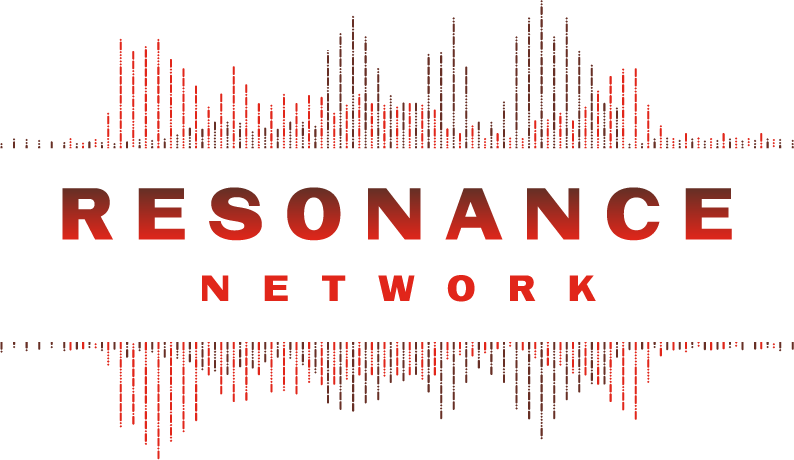
Resonance Network is a national network of people building a world beyond violence.

Network Weaver is dedicated to offering free content to all – in support of equity, justice and transformation for all.
We appreciate your support!
donate in the box above or click here
From Learning to Doing
Many years ago I was teaching high school English on a small island in SE Alaska. I asked the class to compare a piece of literature to the story of the Three Little Pigs. Half of the class couldn't do the assignment because they had never heard of the story of the Three Little Pigs. That changed me forever.
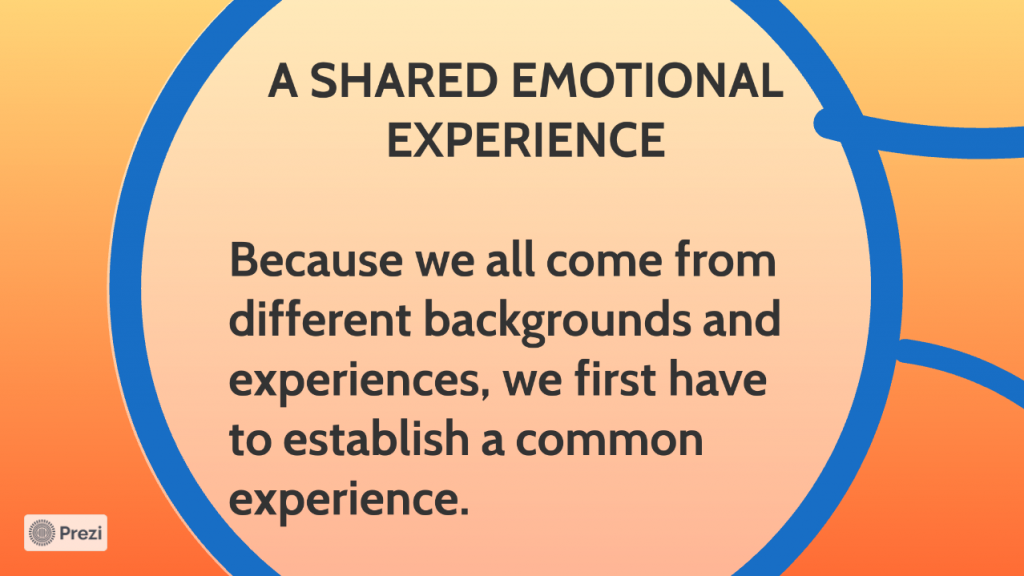
Without shared experiences, learning communities often talk past each other. Inevitably there is a judgement on one side or the other. Each learner brings his/her own experiences to a conversation and uses those unique experiences to make sense of things. Coming together as a learning community to sort through what we understood from something new that is introduced to us is sometimes very frustrating because of all the different experiences brought to the table. To help with that issue in almost any learning community, you can initiate a common experience/action for all participants. When an action is experienced together, suddenly there is more justice in the conversation. The playing field is leveled and the real conversation can begin.
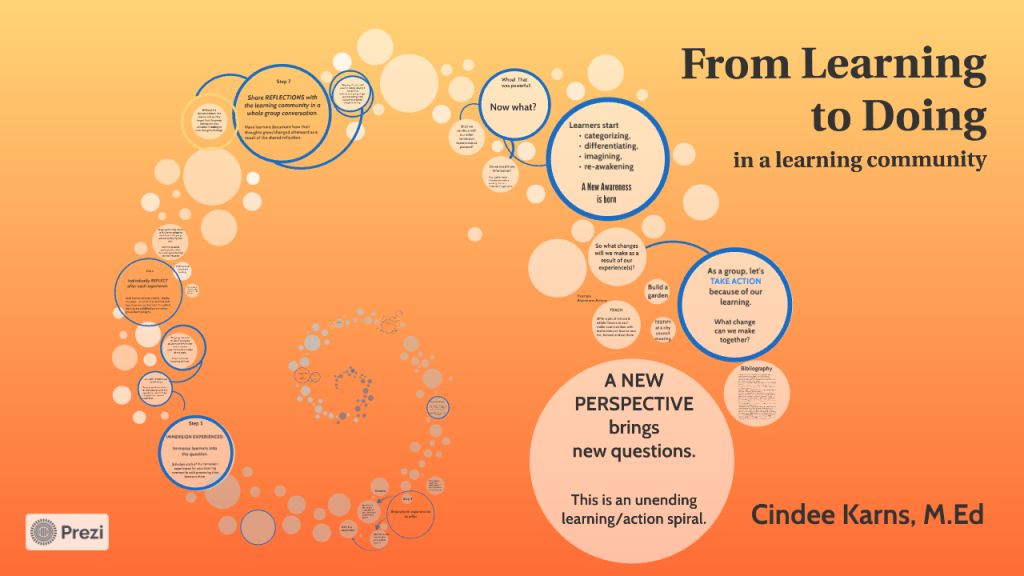
This is a depiction of how that process can be set up for any learning community. The condition is that the learning spiral never ends....every round goes higher, higher. The outcome is that participants almost always feel like they can act on their new knowledge and continue the learning cycle on their own.

Click HERE to access the "From Learning to Doing" resource. A slide presentation on how to create shared experience in a community to initiate actionable change.
Click HERE to access the slide show directly at prezi.com

Cindee Karns, a life-long Alaskan, is a retired middle school teacher with a master's in Experiential Learning. She is founder/weaver of the Anchor Gardens Network, which is attempting to bring increased food security to Anchorage. She and her husband live in and steward Alaska's only Bioshelter
Appreciate Network Weaver's library of free offerings and resources?
Donate below or click here
thank you!
The Art of Measuring Change
What are your associations with words such as “measurement”, “evaluation” or “indicator”? For many people these words sound annoying at best, and there are good reasons for it. Yet - given the fact that you clicked on this article - it’s also very likely that you are motivated to contribute to social change, and the main intention of this article is to share about the beauty and collaborative power of attempting to measure it. What I am not doing is offering quick solutions, the same way art is not a solution to a problem. Rather, it is an invitation to step back, look at the nuanced process of change with curiosity and an inquisitive mind, and maybe discover something new. The article is also available as a dynamical systems map.
In a nutshell
There are two ways of reading this article:
- Exploration mode: Use the systems map provided above and use the visual representation to navigate through the article more flexibly.
- Focussed mode: Stay here and follow the flow of the article.
Here already a quick overview of the main points and arguments:
- There is a good reason to be skeptical of impact measurement. If the approach taken is too simplistic and/or mainly serves to validate a perspective (e.g. of the donor), it’s almost impossible to measure what truly matters. Rather, such an approach further perpetuates existing power imbalances and puts beneficiaries at risk. (section: The dangers of linearity)
- The measurement of social phenomena has to pay justice to the intricacies and complexities of a project, a program, or any given action. This requires understanding, which puts empathy, listening and collaboration at the centre of an empowering approach to measuring change. (section: About potluck dinners and “power with”)
- Meaningful indicators serve as building blocks in the attempt to capture social change. An indicator is meaningful when it not only follows the SMART principles, but is also systemic and relevant, shared (understood and supported by all stakeholders) and inclusive (aware of power relationships). (section: Indicators that matter)
- Complexity science can provide an alternative scientific paradigm to understand and make sense of our world and, hence, to measure change. (section: Coming back to complexity)
- It’s time to equally distribute power, namely the ability to influence and shape “the rules of the game”, or potentially even the kind of game that is being played in the first place. A crucial step towards this is describing and defining what desired social change is and how we go about measuring it in a collaborative way. (section: Synthesis)
The starting point
I have been working in the field of impact evaluation and measuring social change for around 6 years now. I’ve interviewed cocoa farmers in Ghana, developed surveys and frameworks, crunched Excel tables of different sizes and qualities, mapped indicators, and held workshops on tracking change in networks. Doing all of this is way more than a job to me. I have met wonderful people on this path, have been part of impactful projects and really had the feeling of being able to contribute in a meaningful way.
To me, impact evaluation is an ambitious, creative and collaborative application of complexity science (more on that later). It can be a deeply empowering process that reveals hidden opportunities and structural challenges, creating empathy between groups of people.
And it can be harmful.
The dangers of linearity
Let me share a definition with you to explain what I mean:
“An impact evaluation analyses the (positive or negative, intended or unintended) impact of a project, programme, or policy on the target population, and quantifies how large that impact is.”*
I agree with that definition in general, yet when it comes to the details in language, my opinion differs significantly. For example:
- Nobody is or should be a target. We don’t shoot projects, programs or policies at people, we work with people.
- Quantification plays a role, but we should also qualify impact.
- It is not said who has the power to define “positive or negative”, and “intended or unintended”.
These are not simply trivial semantic differences. All too often I experienced situations where impact evaluation was used by organisations to prove and validate the effectiveness of their services, rather than to truly understand the perception and consequences of what they offer.
Here is an example of what I mean: A couple of years back I had the opportunity to visit cocoa farmers in Ghana for an impact evaluation for an NGO. We found out that, yes, the NGO’s activities are actually having an effect and are contributing positively to farmers’ income. But we did not capture in writing the fact that most farmers stopped growing subsistence crops for their own consumption, hence making themselves more vulnerable to global trends and market prices. A few months after I left, the market price for cocoa dropped significantly. We did not capture it as it was not part of our evaluation framework or our mental model about what counts as relevant information.*
This is what happens all too frequently: We have pre-defined and pre-conceived notions of what counts as a data point, and what doesn’t. This again is usually based on a linear model of thinking (aka “A” leads to “B”), not accounting for the complexities and intricacies of human interaction and social systems. I have talked to so many people in the field that were frustrated, stating something along the lines of “we don’t measure what is truly relevant”.
To put it another way: If empathy and understanding are not at the centre of impact evaluation, both as the foundation and the goal, then it might be (unintentionally!) used against the people we want to benefit. It’s like having a knife in your hand. You can use it to prepare a delicious meal, but also to hurt yourself and others.
About potluck dinners and “power with”
Let’s dig a bit deeper into that: We’ve learned that what we do in impact evaluation is to assess the change attributed to an intervention (a project, program, workshop etc.). You do something and then something else happens. Now, we want to understand the “somethings” and how they are connected. This is not as simple a task as it may seem. Reasons include:
- We humans love to make our own meaning. You (and your organisation) probably know what the intervention is, but others perceive it fromtheir own perspective and life reality.
- Change is like air: Ever-present and hard to grasp. The “mechanics” of change can’t be pinned down easily and require us to look at context & conditions. Similarly, we know how difficult predictions are. Should we trust the weather forecast? For the next 3 to 5 days probably, but beyond that?
- There is power in the game: Oftentimes, multiple stakeholders and their multiple opinions are involved in an evaluation. There is nothing wrong with that per se, yet it is important to acknowledge.
The art of impact evaluation, therefore, is not to publish fancy reports, but to apply it in such a way that it deepens the internal understanding of issues at hand and strengthens the collaboration between actors. When this is the case, It builds empathy and human connection, and enables stakeholders to jointly develop shared meaning and scenarios for social change and transformation.
In other words, impact evaluation is based on and deepens listening. Listening not only to people, but to their context and to groups of people, to underlying and invisible challenges and hopes.*
In a more recent project I worked on we called all stakeholders together from the very beginning. It was clear who “has the money”, but we also shared the ambition to collaborate on a level playing field. As a consequence, we co-developed the project’s vision and the evaluation framework. We made clear that the first round of data collection also serves the purpose to understand what is relevant; and that the project goals will be further developed based on the “reality on the ground” rather than the content of the funders’ strategy paper.
We created the space for a genuine dialogue, and the data collected further strengthened the mutual understanding and trust in the group and in the process. It revealed both further challenges and where the leverage points are for creating systemic impact. It also became clear that power is not only linked to money.
“What makes power dangerous is how it’s used. Power over is driven by fear. Daring and transformative leaders share power with, empower people to, and inspire people to develop power within.” (Brené Brown)*
What we did was to ask a different question than normal. The central question was not “how can one central stakeholder prove their impact?”, but rather “how can we jointly contribute to desired change for a matter that we all care about?”. Shifting the question means that stakeholders and their individual contributions are valued differently, and that the quality of interaction changes.
Speaking in the metaphor of our delicious meal: We did not go into a restaurant where you tell somebody what should be cooked for you. Rather, we sent out the invitation to join a potluck dinner. Organising a dinner in this way does not happen at random. It requires clarity on roles and contributions, as well as shared agreements (e.g. on when and where to meet). The fundamental difference to a restaurant visit, though, is that it values participation and what each stakeholder (dinner guest) brings to the table, which in turn requires a mindset of being curious and open to surprises.
So far so good, but how do we actually measure change?
Jannik Kaiser is co-founder of Unity Effect, where he is leading the area of Systemic Impact. His desire to co-create systemic social change led him down the rabbit holes of complexity science, human sense-making (e.g. phenomenology), asking big questions (just ask “why” often enough…) and personal healing. Having worked in the NGO sector, academia and now social entrepreneurship
Originally published at Unity Effect
featured photo by Adi Goldstein on Unsplash
Businesses without Bosses: from hard-nosed leadership to sustainable, self-managing systems
As many of you know, I’m very passionate about helping people understand and experiment with self-organizing.
Joella Bruckshaw and Julian Saipe are executive coaches who have a wonderful podcast series called ‘Behind The Screen’ where they share leadership insights with high profile leaders. In this series of impromptu discussions, Joella and Julian, along with their invited guests, discuss success, the characteristics we choose to reveal, and those we choose to keep behind the screen - engaging thoughts on leadership, performance, authenticity and having fun.
In Episode 12 of the podcast series, Joella and Julian talked with me about Self-Organization.
Our conversation explored how “businesses without bosses” can thrive, just as nature’s own eco-systems do. We also discussed how coaching could facilitate a transition from hard-nosed leadership to sustainable, self-managing systems, where purposefulness itself is the outcome.
Access the interview on Behind the Screen podcast at: iTunes/Apple HERE & Amazon Music HERE
June Holley has been weaving networks, helping others weave networks and writing about networks for over 40 years. She is currently increasing her capacity to capture learning and innovations from the field and sharing what she discovers through blog posts, occasional virtual sessions and a forthcoming book.
featured image found HERE
Who Decides Who Decides?
Have you ever started a group that started with enthusiasm and fizzled out over time? I have. Even more often, I have joined groups that other people started… that fizzled out over time.
So, what happened? If your experiences are similar to mine, here are some typical stories.
- Groups start out with a vague understanding of what we’d do together and then we don’t do things because first we talk… and talk about what we would do if we ever actually started. Needless to say, we don’t start but fade away.
- Someone starts doing things. Somehow the doers take over and there’s no room to plug in. We’re all grateful but there’s also no room to talk about whether what they’re doing fits with the rest.
Self-organization is powerful because it has the potential to align a lot of people and their passion with each other. Yet, self-organization doesn’t mean having “no rules”.
The invisible force that makes or breaks a new group is governance. Governance doesn’t sound exciting, and it reminds everyone of boring board room meetings. Yet, the truth is that governance is everywhere - every group that makes decisions gets to those decisions somehow - whether we like that way of making decisions or not.
So how can we introduce just enough clarity and process to make governance inclusive, easy and unleash the power of self-organization? There’s a new book that describes exactly that. It uses the tools from sociocracy - a consent-based, heavily participatory, and co-creative decentralized governance system - and lays out how to start a group and put decision-making and a good distribution of responsibility and actions into place step by step. The book has printable meeting templates of the first 3 meetings that will support your new group and launch it well!
- In the first meeting, a group establishes how they operate and what they do. They celebrate being a group and spend time getting to know each other.
- In meeting #2, a little bit of structure is established so everyone knows how to contribute, and the group can plan for the future in an accountable way.
- Meeting #3 is all about getting started and reviewing what we’ve done so far - only if we review our processes can we make sure everyone’s needs are considered and we are intentional about how we spend our time.
The process works the best for groups of 3-12 people who are actively involved. It can be used to start or to re-kindle a group.
The book comes with a resource page of printables, demo videos and an interactive forum.
Ted Rau is a trainer, consultant and co-founder of the non-profit movement support organization Sociocracy For All.
He grew up in suburban Germany and studied linguistics, literature and history in Tübingen before earning his PhD in linguistics there in 2010. As part of that career, he moved to the USA and fulfilled a long-held wish to live in an intentional community. Since a career in Academia required more moving around than he was willing to do, he left Academia. Ted identifies as a transgender man, and he is a parent of 5 children. He lives with 70 neighbors in Massachusetts in an intentional community. Link to more info on sociocracy
PLEASE DONATE to help Network Weaver continue in it’s mission to offer free support and resources to networks worldwide.
INTERSECTIONALITY IN NETWORKS AND ORGANIZATION: WIDENING THE SCOPE OF INCLUSION AND DIVERSITY
Growing up, I remember my mother rising daily before the sun to make her way to work. After preparing herself for the day, she’d make a tiring journey into work, consisting primarily of easing slowly along the highway behind other workers headed in to start the day. From a young age, my mother’s commitment to her work stuck out to me, largely in part because it took so much out of her and rarely poured anything into her. Although I loved spending time with my mother at her Corporate America “office jobs,” raiding cabinets for fun supplies and spinning in spinny chairs, I resolved from a very young age that I would never work in an office.
Of course, in my limited eight year old scope, I could attribute all of her stress to the notion that what she did wasn’t very fun. Though, as I enter the workplace now so many years later, I realize that my mother’s stress would soon become my own, and was a seemingly shared stress amongst other Black working women. It had little to do with the type of industry, reports found that the same stress existed across varying levels of position and authority. It was a stress rooted in one-sided dedication, commitment and care.
Black women are more frequently the single head of household than any other demographic. Our appearance and hygiene are more often policed in the workplace. We are more likely to face unfair expectations and are statistically labeled amongst the lowest of expected specialized skills. However, Black women have been committed to working, presenting the highest labor force participation of all women for years.
Despite attempts on all fronts to create better conditions for working Americans (increased benefits, wages, and efforts targeting diversity, inclusion and equity) a lack of understanding of intersectionality has prevented a shift in opportunity from being available.
As our networks and organizations tepidly progress towards diversity and inclusion, the scope of complexity in this particular issue continues to widen. It would seem so far that inclusivity, and our understanding of it, have only begun to puncture the long-standing conservative barriers in our organizational cultures. Only through exploring intersectionality, and understanding it in the context of a network’s specific constituents, will we begin to progress in a more functional and cohesive manner.
Observing the past 60 years of US legislation regarding inclusion in the workplace, one could surmise that we have arrived at a precipice of sorts.
Between 1963 and 1990, multiple pieces of legislation were passed to protect against discrimination in the workplace including The Equal Pay and American with Disabilities Act.
How well do these protections hold up against an ever more precise ability to self-identify along social, sexual, and racial spectrums. Though these protected classes may seem well defined, our research and data collection methods have already outpaced our legislation. Using Equal Pay as an example, we’ve seen wage gaps narrowing between men and women in the decades following 1963. While women have managed to reduce the pay gap between white men’s wages and their own, black women currently earn 21% less than their white counterparts. It would seem that our efforts to empower women weren’t as precisely calculated, or executed, as we assumed they would be. And what about a black transgender women in the workplace?
Organizations are continually overhauling their processes in an effort to keep up with the times, and attract the best talent. We’ve seen companies implement robust recruitment programs, training modules and communication channels that are designed to protect, and even empower, their minority constituents. Unfortunately, reaping the benefits of these processes requires more nuanced thinking about the role of intersectionality, as it relates to race, gender, sexuality, culture and even the mission of your own organization.
Consider weaving more intersectionality informed diversity approaches into your networks by:
- Taking a Look at the Data:
- Get to know your members. Understand the social structures within your network. Observe the smaller networks that develop within your network. Spot the outliers. Use data to better serve your members by knowing who they are, and how they participate.
- Don’t Streamline:
- Cater to Your Organization. Streamlining will make your network more homogenous, but only on the surface. If you have rules and policies, barriers to entry, or specific expectations for your members, always be willing to append them on a case by case basis
- Be Continually Open to Improving Diversity and Inclusion Policies
- Implement an ongoing program designed to empower minorities in your organization. This should be led by minorities, and not just the most privileged or liked minority in the network. Give them the political power in your organization to make substantial changes. Without any power, they will quickly become disinterested. Create safe spaces, and safe communication channels for both suggestions and critiques.
- Lead the Way – Don’t Wait for Legislation
- I’ve worked in several organizations that seemed to be either in steep decline or stagnant. To avoid unknowingly plunging your organization into devastation, learn a lesson from each voice present.
About the Author
Ammie Kae Brooks is a Clinical Therapist, Writer, and Social Impact Consultant in the Chicagoland area. She is passionate about ending gender based violence within communities by cultivating digital and physical healing spaces for Black women, girls and families.
featured image found HERE
DECENTRALIZED NETWORKS AND THE BLACK RADICAL TRADITION – PART 1
FROM COLLECTIVE ORGANIZING TO BUILDING BLACK FUTURES
Every second Thursday of the month, Network Weavers Yasmin Yonis, Kiara Nagel and Marie DeMange host a Community of Practice conversation on Zoom. The skill-building space is available for network weavers who want to create connections and to explore questions central to their roles as facilitators, consultants and movement builders.
In March, the Community of Practice session was dedicated to unearthing what the Black Radical Tradition can teach us about how communities are self-organizing under crisis. Digital Strategist, social entrepreneur, and faith-based organizer Jayme Wooten and former organizer and founding member of Black Lives Matter Global Kei Williams, led the session through a riveting presentation that highlighted how network weaving in movement building creates strong, sustainable, and participatory avenues of community engagement.
In this first installation, I’ll be exploring some of the ideas that resonated with me from Jamye Wooten’s presentation. Join us next week for a second blog post on Kei William’s reflections on the difference between a riot and a rebellion, identifying key moments in a movement and power mapping.
What Moves You to Organize?
One of my key takeaways from the conversation was a question Jamye offered up to the group early on: “How do we move beyond react-ivism to a framework that is more wholesome and holistic?” When I think of activism, I think of forward movement, critical response to urgent community needs. What Jamey’s question opened up for me was an opportunity re-examine the impulse to act. Activism often comes out of a reaction to a perceived injustice. That reaction while visceral and binding, while it galvanizes communities towards action also depends on the viscerality of a trauma response for endurance.
Some good questions to ask in community:
Where in our organizing have we mistaken “react-ivism” for “activism”?
What can we offer as a community in its stead?
Is there room in our reaction to great harm for quietude and spaciousness so that we can recover and organize alongside our comrades?
What Kind of Network Makes a Movement?
A robust and inter-related one.
Another great offering from Jamye was an invitation to look closer at the parallels between movement building and Network Weaving. While people might remember Martin Luther King or Phillip Randolph as leaders of the Civil Rights Movement, what made the movement successful were core members like Ella Baker who helped local leaders in southern communities activate talented and capable young folks to self-organize. [1]
At the core of every network is a relationship, Jamye offers, and crucial to that relationship is trust. We often overlook the importance of relationship and trust building in the health and longevity of networks in an effort to make sure more work gets done, and yet, a sustained, years-long trust-building effort is the only way Baker’s could have galvanized as large and loose a coalition throughout the South as she did.
To that end, it’s important to know what each network needs to be able to organize resources to ensure its success. For example, an Action Network is just a collection or clustering of people who are interested in executing similar tasks: fundraising for an event or creating a mutual aid pod. What an Action Network needs to thrive might be different from a Support Network which is likely the comms and evaluations core of any successful self-organizing pod. That being said, a good Action Network is nothing without a robust Support Network, a collection of folks willing to build out systems and stay on top of resources. And a robust Support Network relies on the trust building, collaboration and thoughtful strategies that come out of relationships in intentional networks. Networks are not so much separate pods with a shared core as they are a spider
Are you using a Centralized vs. Decentralized Models?
According to Jamye’s research, successful Networks are not so much spidery pods with a powerful core as they are a starfish with deeply interconnected and communicative limbs. Thinking of the limbs of the Starfish as replicable and healthy parts of a network allow us to see the importance of each part: Circles, The Catalyst, Ideology, Pre-existing Network, The Champion. A healthy network needs all of these parts to be aligned in vision, communication, interlocking values and principles so that they can adequately organize for power.
A great example of such a model in practice are the hashtag based campaigns such as #BMoreUnited in response to the spotlight on Baltimore in the aftermath of Freddie Grey’s shooting at the hands of Baltimore Police. What emerged was a coalition of citizens who operated as a network without any real leadership structure to demand justice and accountability for police shootings in their community. They were able to do so by prioritizing participatory democracy and building out a skills bank to utilize the human and financial resources that came pouring in after the media spotlight.
From Collective Organizing to Building Black Futures
The last and arguably coolest lessons from the session is that it’s possible to use digital spaces to ethically organize on behalf of communities in ways that are participatory and rigorously innovative. Take CLLCTIVLY “a place-based social change ecosystem using an asset-based framework to focus on racial equity, narrative change, and social connectedness.” The most remarkable aspects of CLLCTIVLY: its asset map/directory which aims to amplify and connect community members with multimedia projects, a strategic partnership/marketplace, a social impact institute, and a rotating Black Futures Micro-Grant . Using the seven principles of Kwanza, CLLCTIVELY aims to put old money in service of new values. COLLECTIVELY- create ecosystem to foster collaboration.
Resources:
- Old Money, New Money 2019: A Community of Practice in Three Parts
- Ella Baker and the Black Freedom Movement: A Radical Democratic Vision by Barbara Ransby
[1]https://time.com/4633460/mlk-day-ella-baker/
Watch the video of the session by downloading the free resource HERE.
About the author:
Sadia Hassan is a facilitator and network weaver who has enjoyed helping organizations use a human-centered design approach to think through inclusive, equitable, and participatory processes for capacity building.
She is especially adept at facilitating conversations around race, power, and sexual violence using storytelling practice as a means of community engagement and strategy building.
She is an MFA candidate in Poetry at the University of Mississippi and has a Bachelor’s degree in African/African-American Studies from Dartmouth College.
